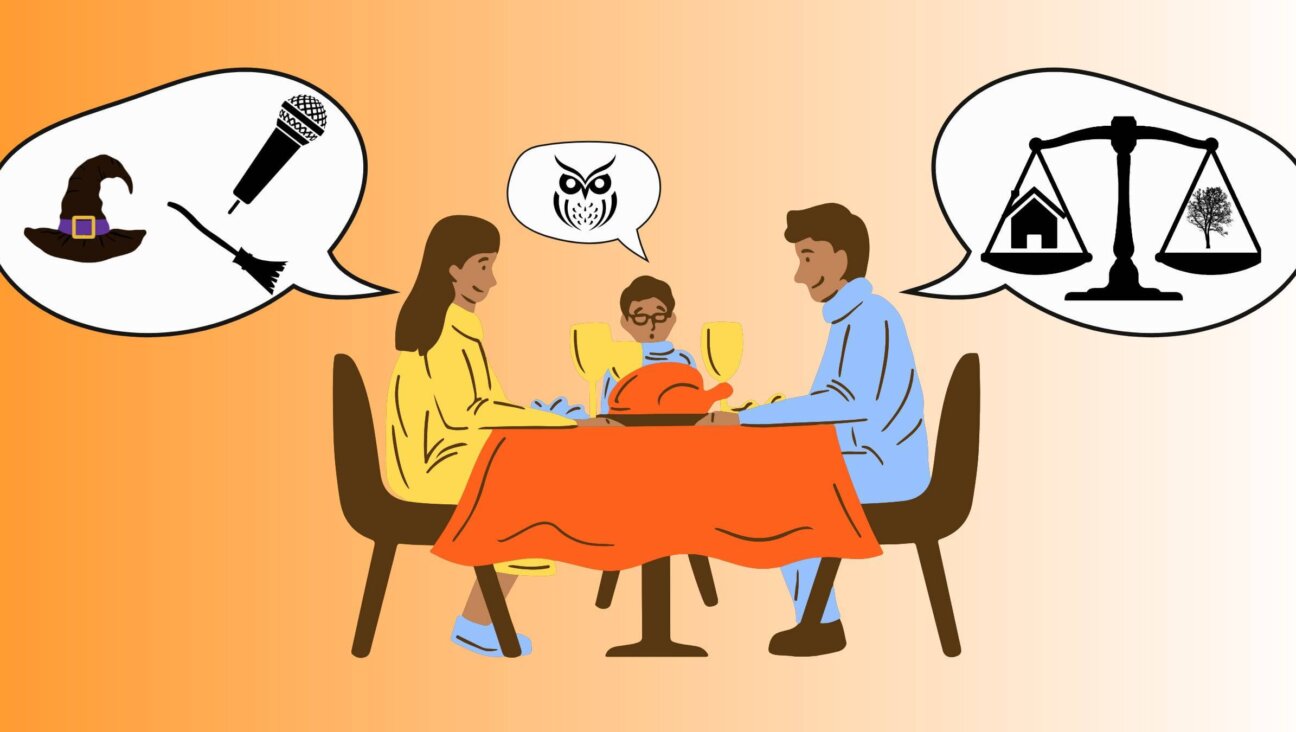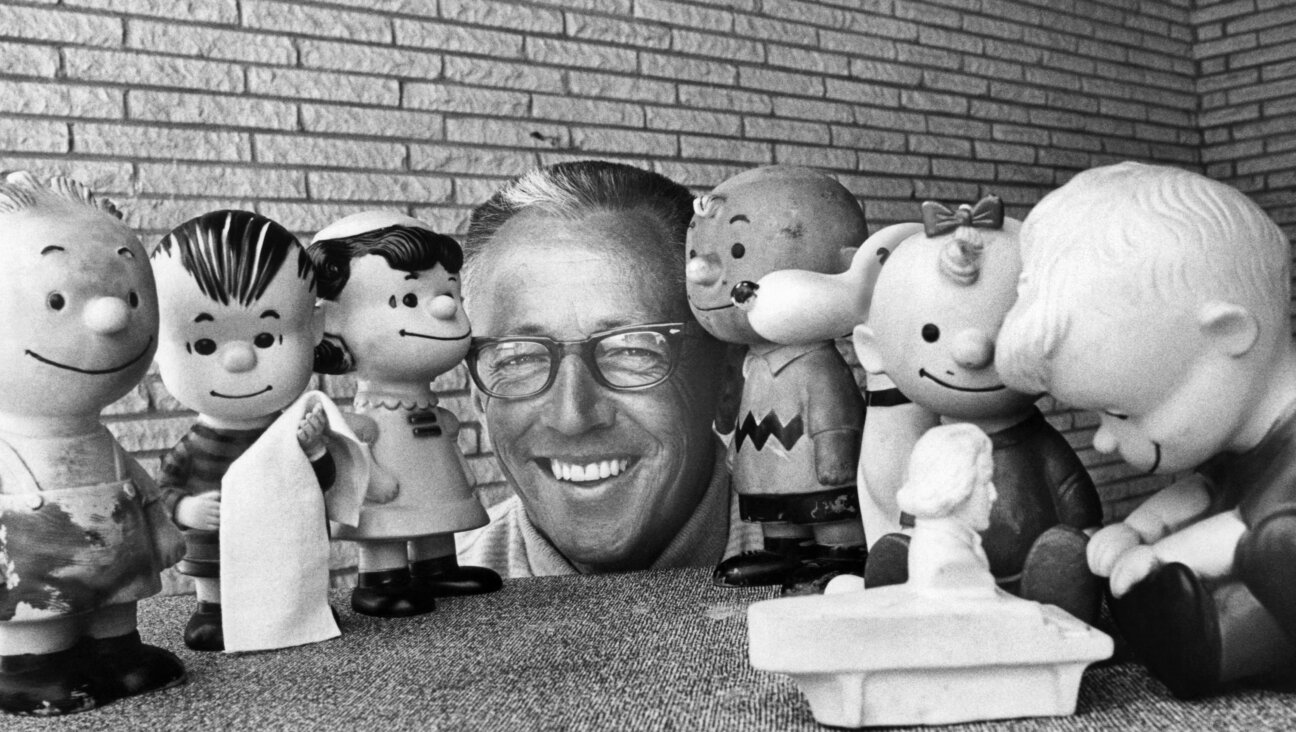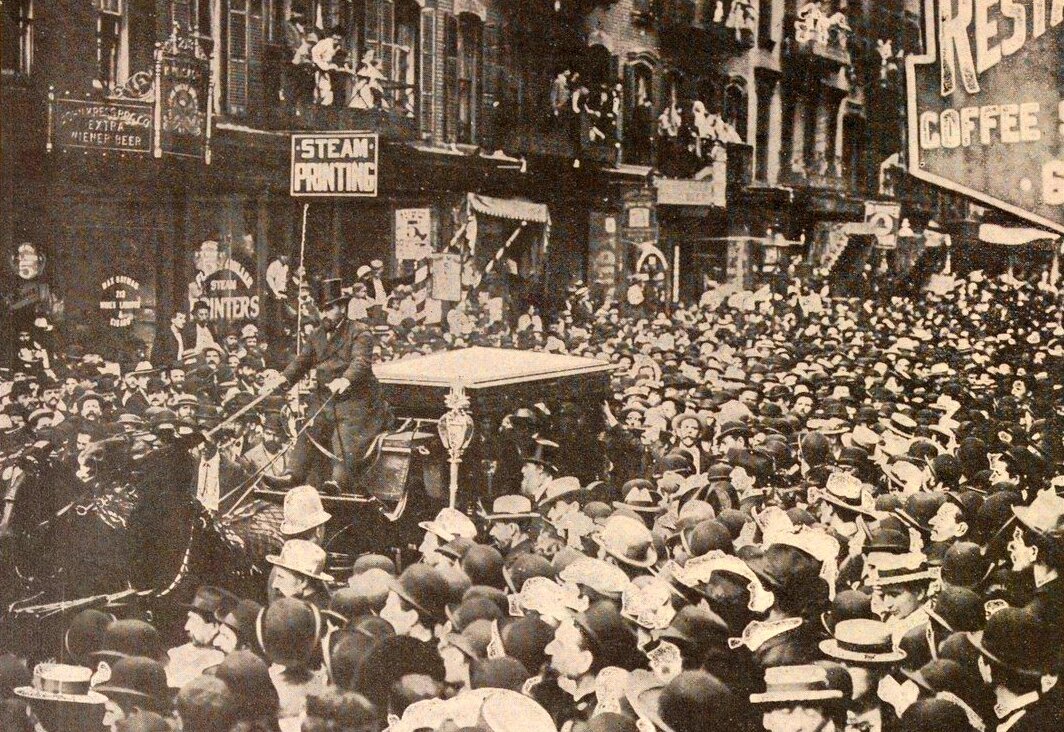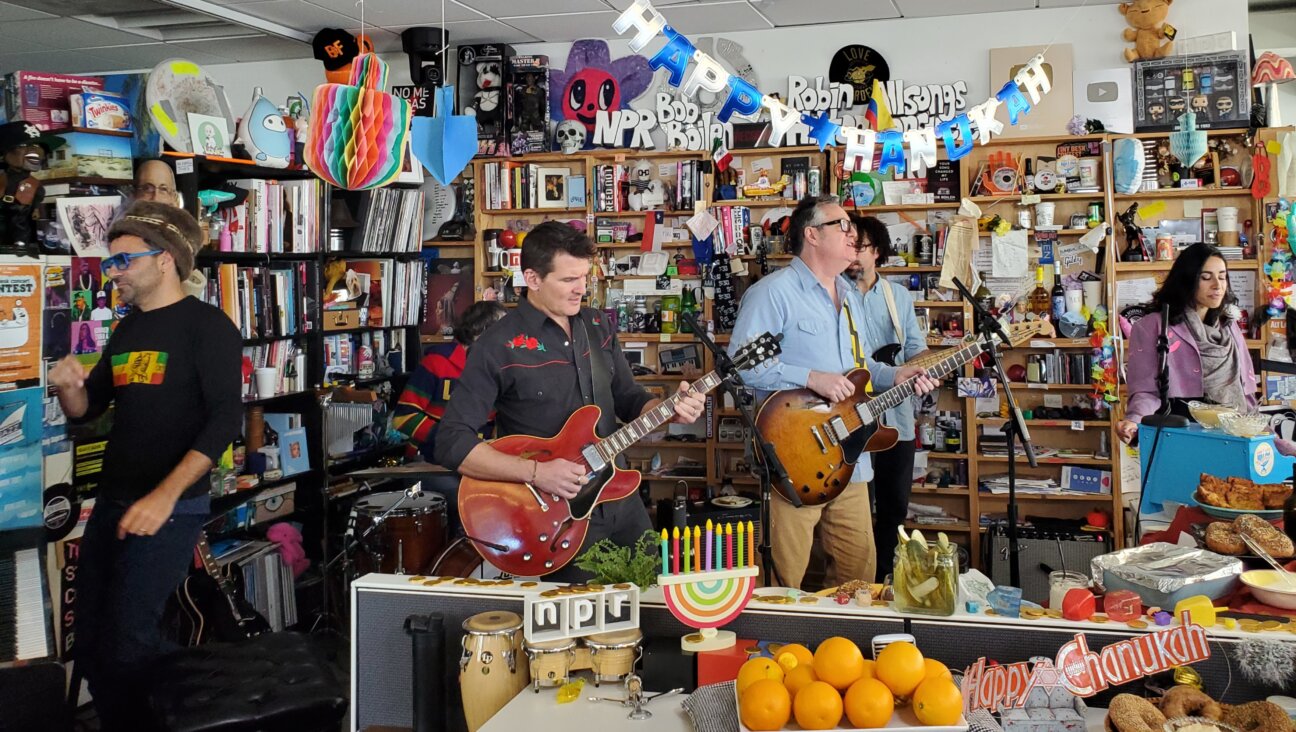Ornaments of the World
They stand only 15 inches tall but bear the weight of Jewish history. I’m referring to a pair of silver-and-gilded rimonim (Torah ornaments) of 19th-century German provenance whose recent arrival in New York was celebrated by Congregation Habonim, a Conservative synagogue on Manhattan’s Upper West Side. These delicately worked ritual objects were first commissioned by Gella and Moses Reichenberger, residents of the Bavarian town of Floss, early in the 1800s and donated to their local synagogue. Years later, they came to adorn the Torah scrolls of the leading synagogue in Nuremberg, then located on Hans Sachs Platz, where Jette and Salomon Tuchmann, the daughter and son-in-law of the Reichenbergers, donated them in 1874. There, they remained in use for more than 60 years until Julius Streicher forcibly dismantled the synagogue, its ritual objects sent to a foundry to be melted down.
In the wake of the Nazis’ advent of power, the latter-day descendants of the Tuchmanns, Hella and Hans Hammelbacher, came to New York City, where they succeeded in making a new life for themselves even though, as Mrs. Hammelbacher told me recently, they arrived “without anything.” Along the way, no thought was given to the rimonim. For one thing, there was no reason to believe they had remained intact; for another, the Hammelbachers did not even know of their existence.
Like thousands of their co-religionists, the Hammelbachers threw themselves into rebuilding their lives and forging new ties, usually in the company of their fellow German Jewish refugees with whom they shared a common language and so much else besides. Ultimately, they found community in Congregation Habonim, then a liberal congregation established exactly one year after Kristallnacht, in November 1939, by Rabbi Hugo Hahn, a native of Essen, in a stunning act of affirmation. After more than 10 years of renting space and of maintaining satellite operations in Queens and in Upper Manhattan, home to large numbers of German Jewish refugees, Congregation Habonim erected its own building, on W. 66th St., in the shadow of Lincoln Center, where it remains today.
Now celebrating its 65th anniversary, Congregation Habonim is thriving. For a while, its fortunes had waned as its membership aged. But recently, under the adroit leadership and sensitive tutelage of its new rabbi, Joanna Samuels, the congregation is experiencing a new lease on life. Its classrooms hum with the sounds of little ones learning their aleph bet, while the sanctuary on Sabbath morning is filled to the brim with that deliciously heterogeneous mix of worshippers characteristic of Manhattan’s Upper West Side.
It was in that very sanctuary — whose humble scale and modest appointments not only stand in sharp contrast to the assertive and proud synagogues that once dotted the Bavarian landscape, but also speak of diminished expectations — that the most stirring, even transcendent thing happened the other day during Sabbath morning services: The rimonim were returned to the family’s remaining descendants, to 90-year-old Hella Hammelbacher, a great-granddaughter of Jette and Salomon Tuchmann; to her son, Frank, daughter-in-law, Janet and 8-year-old old granddaughter, Jill, who clasped them tightly in her hands as she and her family made their way from their seats to the bimah.
A modern-day miracle? An act of serendipity, or of mazel? However you choose to define it, the discovery, as well as the return of the rimonim, is the result of human agency and intercession, the handiwork of German historian Ralf Rossmeissl, who has taken upon himself the mission of finding objects once plundered by the Nazis and restoring them, whenever possible, to their families. Harnessing the power of the Internet and of archival research, Rossmeissl endows the simple act of returning a lost object with unimaginable poignancy and grace.
As the rimonim were paraded up one aisle and down another, encircling the congregation, their little bells made sweet clinking noises. If you listened carefully, you could hear the sounds of a world made whole, piece by piece.
A message from our CEO & publisher Rachel Fishman Feddersen

I hope you appreciated this article. Before you go, I’d like to ask you to please support the Forward’s award-winning, nonprofit journalism during this critical time.
We’ve set a goal to raise $260,000 by December 31. That’s an ambitious goal, but one that will give us the resources we need to invest in the high quality news, opinion, analysis and cultural coverage that isn’t available anywhere else.
If you feel inspired to make an impact, now is the time to give something back. Join us as a member at your most generous level.
— Rachel Fishman Feddersen, Publisher and CEO





















